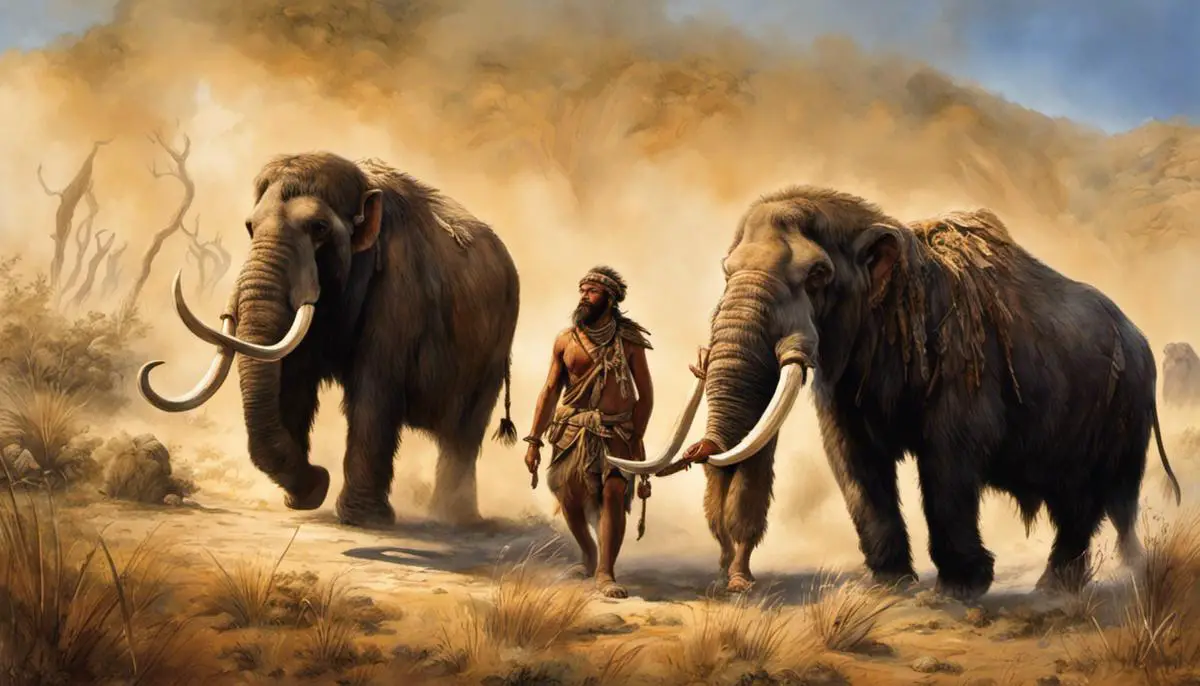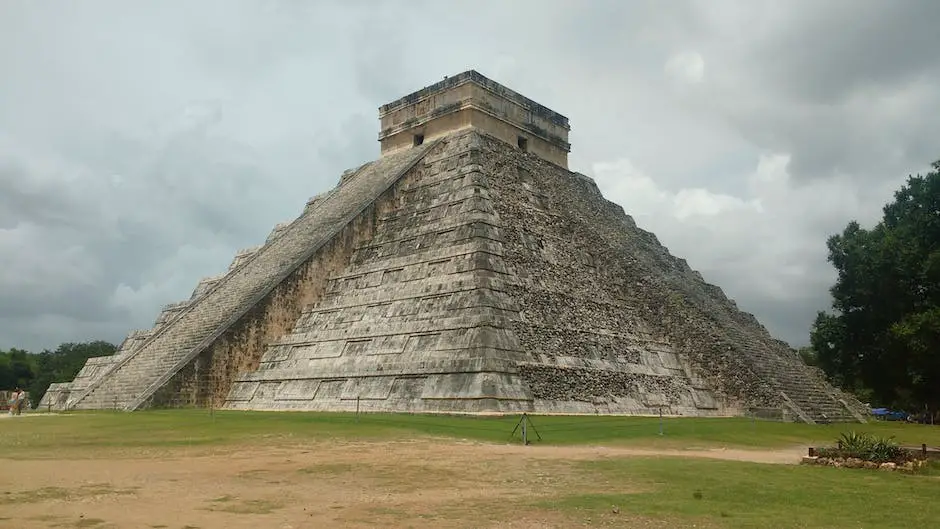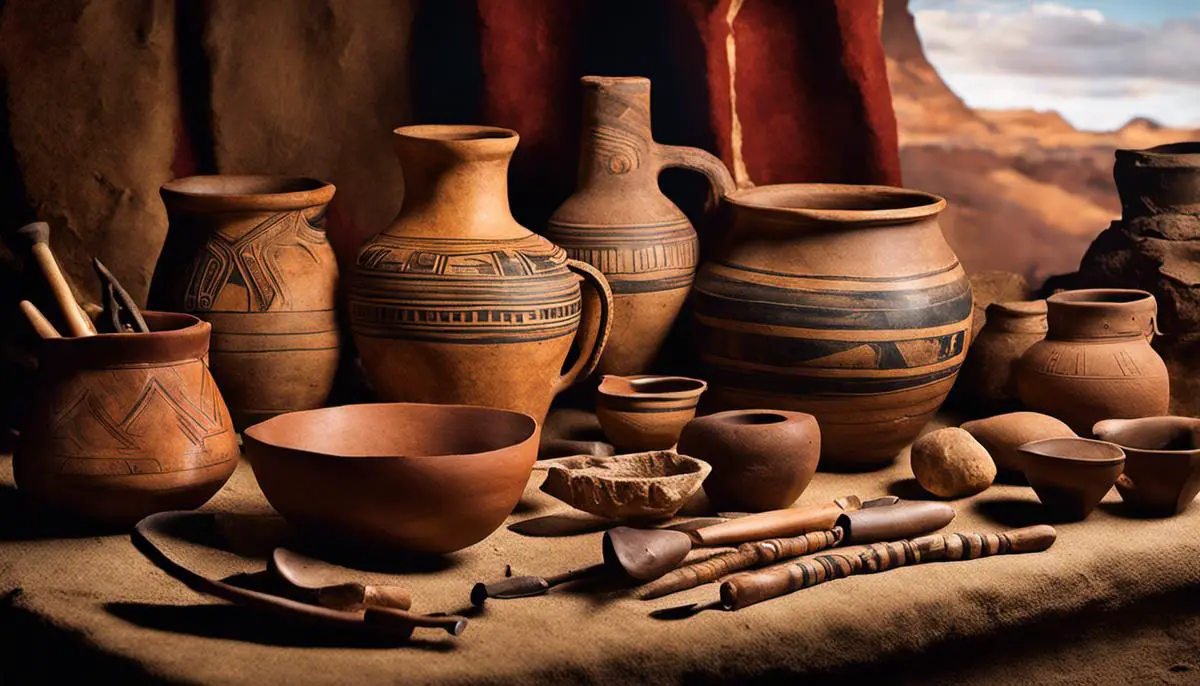North America, a continent rich in historical tapestry and diverse cultures, has been the cradle of civilizations that over thousands of years have made profound impact on the course of human history. From the time-honored societies of the Clovis, Folsom, and Paleo-Indians that etched the genesis of civilization on this land, to the magnificent empires of the Maya, the Aztec, and the Inca – these civilizations not only crafted a saga of immense cultural wealth and technological advancement but also paved the way for an enlightened understanding of various aspects of life. Furthermore, the myriad of Native American tribes – the Iroquois, Algonquian, Sioux and others, rooted in the northern expanses, have significantly contributed to a profound and vivid history that continues to echo through the present day.
The Oldest civilizations in North America
The Clovis Culture
Existing approximately 13,500 years ago, the Clovis people served as one of the earliest identifiable cultures in North America. Predominantly hunter-gatherers, the Clovis people predominantly hunted large game such as mammoths and mastodons. Evidence of their presence is largely reliant on the discovery of ‘Clovis points’, specially crafted stone tools designed to penetrate the tough hides of large animals. It’s believed that the Clovis were nomadic, moving in small groups to follow their prey.
Folsom Tradition
The Folsom culture followed the Clovis around 10,000 years ago and was unique for its drastic cultural shift towards hunting bison instead of mammoth. The Folsom people built their settlements near water sources, and evidence uncovered from archaeological sites suggests that they were far more sedentary than their predecessors. Among the defining artifacts of the Folsom people were their distinctive, fluted projectile points, which served as their primary tool for hunting and were designed to deal with the speed and agility of bison.
Paleo-Indians
The term Paleo-Indian applies to the earliest humans inhabiting North America from 12,000 to 10,000 years ago. These were the people of the final Ice Age, surviving during a time of dramatic climate change and the extinction of many large mammals. These societies were composed of small bands of nomadic hunters and gatherers who relied heavily on nature for subsistence. They fashioned tools and weapons from various materials, including bone and stone, and seemed to hold a deep respect for the natural world that was integral to their survival.
Art and Trade in Ancient North American Civilizations
Art acts as a valuable window into the lives and cultures of ancient North American societies. Cultures such as the Clovis, Folsom, and Paleo-Indians brought beauty and intricacy to portable objects and petroglyphs crafted from locally sourced materials. The depictions of humans, animals, and abstract forms found in these works give us important clues about the spiritual beliefs, survival strategies, and cultural norms of these ancient communities.
Alongside art, trade was another important aspect of these societies. Discoveries of shells, obsidian, and copper suggest that these early societies engaged in commerce long before the arrival of Europeans. This economic activity did more than just facilitate the exchange of goods, it also fostered cultural interactions and the spread of technological innovations. For instance, the distinct fluted points made by the Clovis and Folsom cultures were distributed widely through trade, demonstrating an early form of networking and cultural exchange among different tribes.

Maya, Aztec, and Inca Empires
The Flourishing and Decline of the Maya Civilization
The ancient Mayans built a civilization in Mesoamerica that was notable for developing the only known fully developed written language in the pre-Columbian Americas. They also produced intricate art, constructed impressive architectural works, and developed advanced mathematical and astronomical systems. Over 40 flourishing cities sprung up, each hosting anywhere from 5,000 to 50,000 inhabitants.
However, the Maya civilization was not monolithic, but rather a collection of independent states linked by a common culture. The society was hierarchical and highly stratified, with a king and nobility ruling over the lower classes, and priests holding considerable power through their religious and astronomic roles.
The Mayans were prodigious artists, their rich artistic legacy evident in their sculptures, pottery, murals, and carvings. Their knowledge in astronomy was highly advanced, guiding the construction of their temples and pyramids in alignments with celestial events. In mathematics, the Mayans operated a vigesimal (base-20) numeral system and had a clear understanding of the concept of zero—a remarkable achievement for the period.
In the 8th and 9th centuries, the civilization began to falter and the once-successful Maya cities started to decline. The collapse of their agricultural systems, frequent warfare, and a shortage of resources due to overpopulation are all considered possible factors contributing to the decline. However, the exact cause or combination of causes continues to be a subject of debate among scholars to this day.
The Aztec Empire
The Aztec Empire emerged in the 14th century and rose to become the dominant power in ancient Mesoamerica. The empire was centered in the city of Tenochtitlán (modern-day Mexico City), which was an architectural marvel with its canals, temples, and palaces.
Society was highly structured in the Aztec empire. The king was the supreme ruler, followed by nobles, commoners, serfs, and then slaves. The Aztecs were known for their militaristic society, and success in warfare was a sure means of upward social mobility.
The Aztecs are remembered for their significant contributions to art and architecture, with structures like the Templo Mayor standing testament to their prowess. Much of Aztec society was oriented toward their religion and gods, which also fueled their practice of human sacrifice.
The Aztec Empire ended in the 16th century when Spanish conquistadors, led by Hernán Cortés, overthrew the empire. The conquest was aided by the smaller city-states surrounding Tenochtitlán that resented Aztec domination.
Unveiling the Inca Empire
The marvel of the pre-Columbian age, the Inca Empire or Tawantinsuyu, held sway over a vast expanse spreading from what is today known as Colombia to Chile, tracing the path of the Andes.
The Inca society was a staunchly hierarchical monarchy, with the ruler or the Inca not only revered but also worshipped as a divine entity. Society was broadly segregated into two classes – the noble and the commoners. The former was a select group made up of royal lineage, the priesthood and the military leadership, while the latter encompassed the working class.
Inca engineering left behind its footprints in the form of architectural masterpieces like Machu Picchu, celebrated for its intricate dry-stone walls and well-planned irrigation systems. The Incas did not have any documented writing system, but they ingeniously used a complex system of knotted cords, known as Quipus, for maintaining records and accounts.
The Inca civilization left an indelible mark on agriculture with its introduction of the terrace farming method, apart from a wide range of agricultural breakthroughs. They also showcased a knack for mathematics, devising a multifaceted system of measurements and calculations which were mainly deployed for administrative use.
Alas, the Inca Empire fell to the superior military strength of the Spanish under the leadership of the conquistador Francisco Pizarro. Assisted by indigenous tribes and aided by the devastating impact of European diseases, the Spanish brought down the curtain on the Inca civilization by mid-16th century.

Native American Civilizations
Introduction to the Iroquois: The League of Five Nations
Transitioning from the grandeur of the Inca Empire, we now delve into the intriguing world of the Iroquois civilization, better known as the Haudenosaunee, or the “People of the Longhouse.” Nestled in the Northeast region of North America, this pre-Columbian civilization stood out due to its composition of five distinct tribes, namely the Mohawks, Oneidas, Onondagas, Cayugas, and Senecas. These tribes established the League of Five Nations, forming a confederacy bound by the Great Law of Peace, a unique constitution that played a crucial role in shaping the American Constitution. The society of the Iroquois was a marvel of organization and sophistication, with the tribes being skilled hunters, successful agriculturalists, and proficient traders. They proposed and practiced the pioneering Three Sisters agriculture technique, cultivating corn, beans, and squash in a manner that ensured a nutritious diet and maintained soil fertility.
Algonquian: The Eastern Woodlands Peoples
The Algonquian peoples were a broad grouping of tribes residing in the Eastern Woodlands region. They included tribes like the Pequot, Narragansett, Powhatan, Ojibwe, and many others. Different tribes had different cultures, but most lived in semi-permanent villages and practiced a mix of farming, fishing, and hunting. The Algonquian languages were widespread and widely spoken, constituting the largest language group north of Mexico. Spirituality was intertwined with daily life; Algonquian peoples had complex religious beliefs centered around a Great Spirit and a continual interaction between spiritual and physical realms.
Sioux: The Tribes of the Great Plains
The Sioux Nation, also known as the Dakota or Lakota, dominated the Great Plains region. They were divided into three major tribes: the Dakota, Nakota, and Lakota, each having different dialects and cultures. Though traditionally a semi-sedentary people relying on farming and hunting, the Sioux adopted a nomadic lifestyle with the acquisition of horses during the 16th century. Known for their prowess in warfare and their spiritual resilience, the Sioux culture was deeply rooted in respect for nature. They considered every aspect of life sacred, embodied in prayer, vision quests, sweat lodge ceremonies, and the sacred Sun Dance.
Hopewell Culture: The Mound Builders
The Hopewell Culture was a pre-Columbian Native American civilization in the eastern region of North America, primarily in present-day Ohio. They were famed for their construction of complex earthwork mounds, often in shapes of animals or geometric designs, which were used for various purposes, including burial, ceremonial, and possibly astronomical. The Hopewell had extensive trade routes, acquiring materials like obsidian and copper from distant parts of the continent. They excelled in pottery, tool making, and sculpture.
Ancestral Puebloans: Masters of the Cliff Dwellings
In the Southwest region resided the Ancestral Puebloans, modernly known as Anasazi. Remarkable for building colossal stone and adobe structures in the cliffs, like those found in Mesa Verde and Chaco Canyon, this civilization thrived in its harsh desert environment. They were skilled farmers, developing complex irrigation systems to grow cotton, corn, and beans. The Ancestral Puebloans had a unique artistic legacy, with intricate pottery and petroglyphs reflecting their spiritual conception of the cosmos and nature.
Mississippian Culture: The City Builders
The Mississippian Culture was prevalent in the Mississippi River valley. Known for constructing bustling fortified cities with monumental earthwork structures, their largest city Cahokia, in modern-Day Illinois, is estimated to have had a population rivaling that of London during the same period. The Mississippians were advanced agriculturalists, and maize was their staple crop. Their socio-economic and political structures were complex; they had hierarchical chiefdoms, a professional class of artisans, and an intricate trade network. Their religious life revolved around multiple deities, with a clear tendency toward solar and fertility cults.

So, as we stand and reflect on the colossal timeline of North American civilizations, we are bound to be filled with a sense of awe and deep respect for the cultural, artistic, scientific, and societal contributions these civilizations made; contributions that have strongly etched themselves not only into the annals of history, but also the fabric of modern society. This journey, raw and informative, leads us to a greater understanding of these vibrant cultures, and what they signify in terms of human progress and evolution. From the ancient paths of the Clovis, Folsom, and Paleo-Indians, to the mighty empires of the Maya, Aztec, and Inca, and further, to the rich tracts of the Iroquois, Algonquian, Sioux, and other Native American tribes – the tale of North America’s civilizations is one of power, wisdom, resilience and, above all, human spirit.
![]()
